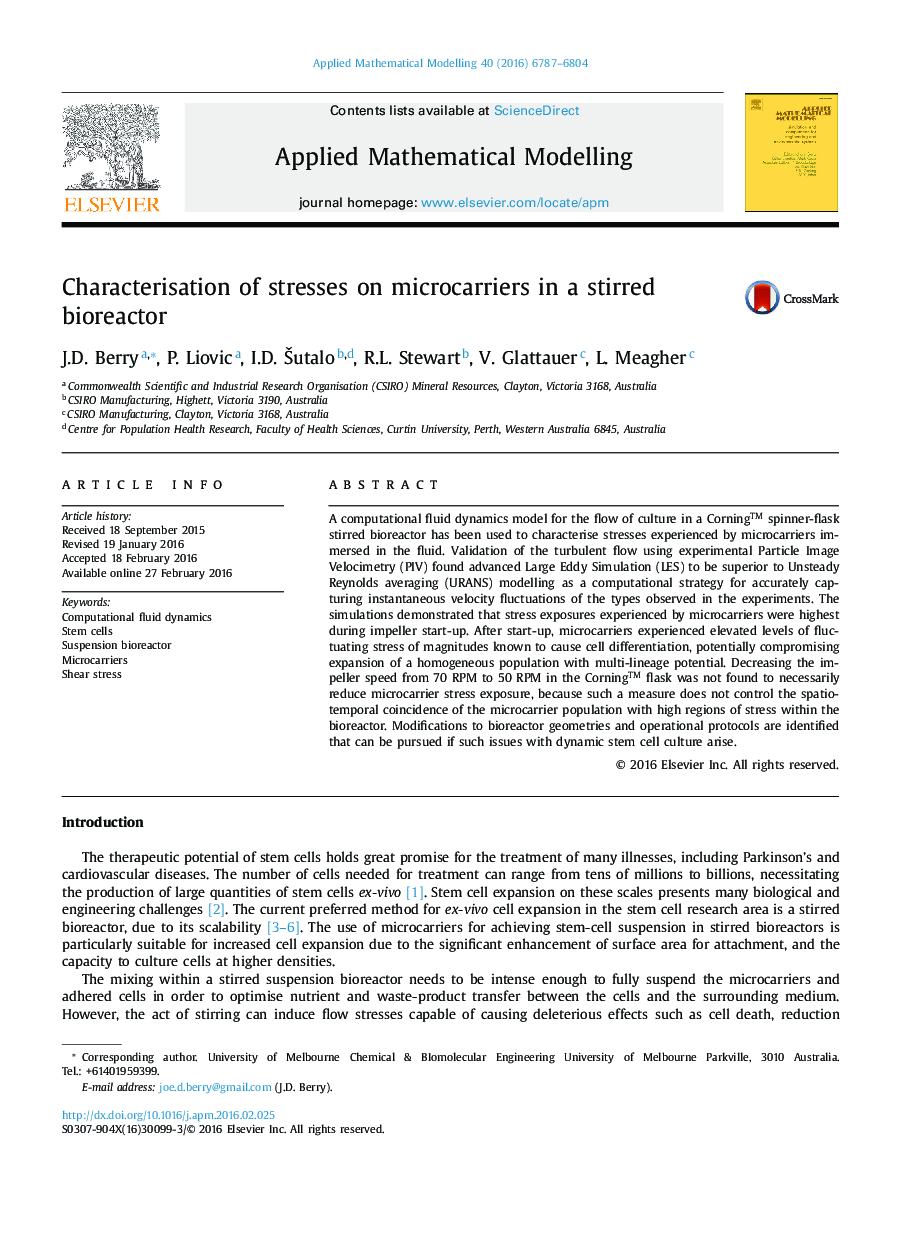| Article ID | Journal | Published Year | Pages | File Type |
|---|---|---|---|---|
| 1702797 | Applied Mathematical Modelling | 2016 | 18 Pages |
Abstract
A computational fluid dynamics model for the flow of culture in a Corning⢠spinner-flask stirred bioreactor has been used to characterise stresses experienced by microcarriers immersed in the fluid. Validation of the turbulent flow using experimental Particle Image Velocimetry (PIV) found advanced Large Eddy Simulation (LES) to be superior to Unsteady Reynolds averaging (URANS) modelling as a computational strategy for accurately capturing instantaneous velocity fluctuations of the types observed in the experiments. The simulations demonstrated that stress exposures experienced by microcarriers were highest during impeller start-up. After start-up, microcarriers experienced elevated levels of fluctuating stress of magnitudes known to cause cell differentiation, potentially compromising expansion of a homogeneous population with multi-lineage potential. Decreasing the impeller speed from 70 RPM to 50 RPM in the Corning⢠flask was not found to necessarily reduce microcarrier stress exposure, because such a measure does not control the spatio-temporal coincidence of the microcarrier population with high regions of stress within the bioreactor. Modifications to bioreactor geometries and operational protocols are identified that can be pursued if such issues with dynamic stem cell culture arise.
Related Topics
Physical Sciences and Engineering
Engineering
Computational Mechanics
Authors
J.D. Berry, P. Liovic, I.D. Å utalo, R.L. Stewart, V. Glattauer, L. Meagher,
